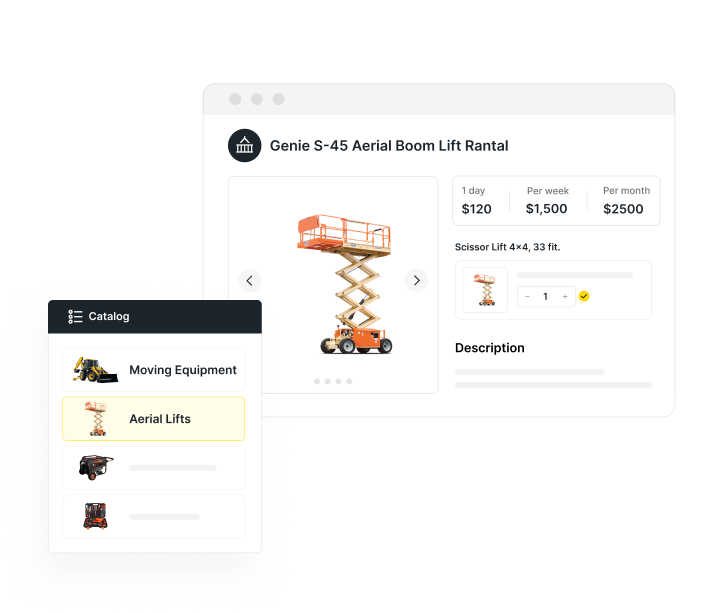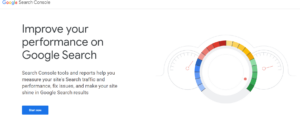If you’re in the business of renting out heavy equipment, an inspection checklist will help you maintain your equipment in safe operating condition, which means saving money in the long run. When used properly and diligently, these checklists will protect your assets and add an extra layer of accountability to ensure your business continues to run smoothly.
While your techs may inspect the obvious components like tires and lights, it’s important to take advantage of comprehensive checklists like our free version below so that no detail goes unchecked. After all, you owe it to your customers to provide safe equipment that functions as expected.
Free Heavy Equipment Inspection Checklist PDF
Relying on memory during an inspection is a great way to ensure that something ends up getting missed. On the other hand, a well-constructed heavy equipment inspection checklist is a solid tool to keep your inspections streamlined.
Using an equipment inspection from PDF can further increase business efficiency since your techs can complete their inspections with a mobile device rather than constantly needing to print new paper forms.
So take the first step in safeguarding your business and assets today with our free checklist PDF.
If you choose to use it digitally, make sure you still print off a few copies to give to your rental customers. You can even include one in the cab of each piece of equipment for their convenience.
Another benefit of using a digital checklist is the ability to catalog inspections easily and share them with your team. This way, logs don’t go missing, and you can streamline the maintenance request process too.
Download Quipli’s Heavy Equipment Checklist PDF
Why You Need a Standardized Heavy Equipment Inspection Form
By using a standardized heavy equipment inspection form, you will not only make sure your equipment functions properly, but you will also help to increase the life of your equipment and ensure its operators remain safe.
You also reduce the risk of your business facing liability for accidents that occur due to a lack of proper maintenance.
Prevent Accidents from Occurring
According to the Bureau of Labor Statistics, the construction industry saw 1,008 fatal occupational injuries in 2020 alone. Heavy and civil engineering construction accounted for almost 200 of those deaths, while specialty trade contractors accounted for 576.
If you rent heavy equipment, the good news is that you can make a difference and reduce the risk of similar injuries and deaths when your customers choose to work with you. Checking your equipment regularly will safeguard you and your customers and limit casualties.
Reduce Overall Maintenance and Repair Costs
Performing routine inspections with a comprehensive equipment inspection log will help to limit costly repairs. By meticulously following a rigorous checklist, you’ll be able to identify problems early on before they become major ones, keeping your repairs cost-effective.
Replacing a major piece of equipment, such as an excavator or crane, can cost tens to hundreds of thousands of dollars. And due to inflation and supply chain issues, heavy equipment is only getting more expensive. However, if you properly care for your assets, major capital expenditures can be kept to a minimum.
What Should a Heavy Equipment Inspection Checklist Include?
Every equipment inspection form should comprehensively cover the components needed to start and operate a piece of equipment. After all, most operators will know to check the obvious things like oil levels, but it’s easy to forget something as minor as battery levels without a proper list.
You’ll want to perform three separate checks to ensure your equipment is client-ready: pre-start, warm-up, and shutdown.
Your pre-start check should be the most comprehensive, as you can get under the hood safely to examine the engine. As such, you’ll want to spend most of your inspection time here.
Next, you’ll want to perform a check once the equipment has had 5 to 10 minutes of warm-up time, allowing you to check for issues like leaks that weren’t apparent during the pre-start inspection. This is when you’ll want to check for anything that requires power, such as lights and brakes.
Finally, your shutdown should cover three key things: fuel, engine, and safe parking.
Here’s a more comprehensive look at what each stage should entail:
Pre-Start
Before starting the equipment, you’ll want to check all of the following:
- Parking: Before you start, ensure that the equipment is securely parked
- Seat Belts: Make sure all belts extend and lock properly
- Fluids and Oil: Check levels
- Visible Leaks: Examine the ground under the equipment
- Undercarriage: Look for worn or broken parts
- Engine: Check hoses, valves, and belts
- Tires: Look for nails or punctures, and check pressure and tread level
- Rims: Look for damage to the rims and loose nuts
- Gauges and Lights in the Interior Cab: Make sure they are in working order
- Battery: Check that the battery is charged and connected
- Suspension: Check for vibration or concerning noises
- Fan Belts: Look for any splits or tearing on belts, and check tension levels
- Cooling System: Look for leaks or damage
- Fuel system: Check the fuel level and look for leaks
- General Condition of Cab Interior: Including horn, mirrors, wipers, and seats
Warm-Up
After the equipment has had a chance to warm up for several minutes, check the following:
- Horns
- Back-Up Alarms
- Air Filters: Replace if needed
- Lights: Including brakes, headlights, reverse, turn, etc.
- Hydraulics and Fluid Levels
- Brakes: Check for air and fluid leaks
Shutdown
When shutting down the equipment, make sure to check the following items:
- Fuel Tank: Fill the tank and securely tighten the cap
- Engine: Let the engine idle for a few minutes before shutting off
- Parking: Park the equipment in a safe location
Keeping Your Equipment in Great Condition with the Right Tools and Partners
The bottom line is that regularly inspecting your equipment can help you avoid customer complaints, expensive repairs and fines, and serious injuries. But inspecting your assets is only one facet of running an equipment rental business.
Thankfully, saving money and keeping your business running smoothly is what the Quipli team specializes in. That’s why we’ve provided a free equipment checklist that will protect your employees and your customers.
The Quipli platform can further streamline your equipment rental business with equipment scheduling software, equipment checkout software, and a inventory management system to seamlessly keep track of your rental inventory. Reach out for a demo to learn more today.
Download Quipli’s Heavy Equipment Checklist PDF
A Rental Platform for All Kinds of Equipment
No matter what your most rented piece of equipment is, Quipli provides an all-in-one system that combines an innovative inventory management and reservation system, rental website builder, Point Of Sale Software, and built-in reporting you need to make running your business that much easier.
Quipli’s equipment rental software will streamline your equipment rental business. Reach out for a demo to learn more today.









